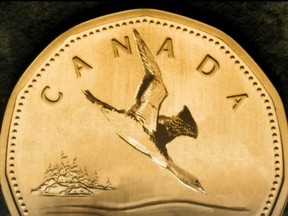Loonie Watch: ‘Nothing but Dead Air’ Stopping the Canadian Dollar from Hitting 68 Cents U.S., Says Rosenberg
The Canadian dollar has taken a significant hit, plummeting over half a cent and falling back below 71 cents U.S. after incoming U.S. President Donald Trump announced plans to impose a 25% tariff on Canadian and Mexican imports over border and drug issues.
Breaking Down the Numbers
On Monday night, the loonie fell by an impressive 1.34%, hitting lows not seen since mid-2020, with a value of 70.52 cents U.S.
This decline is significant, especially considering the loonie’s recent downward trend. In fact, the Canadian dollar has been struggling to break through the 68-cent barrier, with many experts predicting that it will eventually hit this mark.
Expert Insights
According to David Rosenberg, founder of Rosenberg Research and Associates, the downside risks for the Canadian dollar remain high. In a note to clients, Rosenberg pointed out that the loonie’s recent decline has left it with little technical support until it reaches the 68-cent mark.
"Looking at the chart, there is simply nothing but dead air from here to there," Rosenberg said. "The Canadian dollar, having broken down to C$1.4127, has little technical support now until the C$1.47 mark (68 cents U.S.)."
Rosenberg’s comments are particularly relevant in light of recent market trends. With interest rates expected to continue falling – including a potential 25 basis-point decrease when the Bank of Canada meets on December 11 – the Canadian dollar is likely to remain under pressure.
Tariff Threats and Market Volatility
The imposition of tariffs by the U.S. government has sent shockwaves through global markets, with many analysts predicting that these measures will ultimately hurt American industries and consumers.
However, some experts believe that the loonie’s recent decline may be overreacting to the tariff threat. Karl Schamotta, chief market strategist at Corpay Currency Research, noted that while tariffs could have a significant impact on trade, they are unlikely to be as effective in reaching implementation.
"We suspect these moves will ultimately look overdone, with the cold commercial logic of international trade and domestic price pressures prevailing in reducing the tariff burden that actually reaches implementation," Schamotta said.
Volatility Expectations
Despite some analysts downplaying the impact of tariffs, market volatility is expected to remain high. In a note this morning, Schamotta warned that participants should be prepared for further uncertainty, with expectations for volatility ratcheting higher across major currency pairs.
"This will help to boost the dollar in relative terms," Schamotta said. "A 70 cents U.S. Canadian dollar is in scope before year end."
Rosenberg’s Warning
In light of these developments, Rosenberg is cautioning Canadians – especially those planning a winter trip south – to book their travel arrangements now.
"Best for the snowbirds to book their winter trip to Florida now if they have yet to do so," he said. "This will help them avoid any potential disruptions in travel plans."
What’s Next?
As the Canadian dollar continues to decline, many experts are left wondering what lies ahead. Will it eventually break through the 68-cent barrier, or will it continue to struggle against a strong U.S. dollar?
Only time will tell, but one thing is certain – the recent developments in global markets have made it clear that the Canadian dollar is facing significant challenges.
Stay Ahead of the Curve
To stay informed about the latest market trends and analysis, be sure to bookmark our website and sign up for our newsletters.
Join the Conversation
Share your thoughts on the loonie’s recent decline and what you think lies ahead for the Canadian dollar in the comments below.
